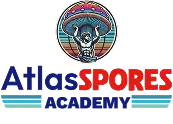Quick Learn Summary
Essential Knowledge: Accurate spore measurement requires proper calibration, standardized protocols, and statistical analysis. Modern microscopy software enables precise dimensional measurements critical for taxonomic identification and research documentation.
Key Requirements: Calibrated microscope, measurement software, stage micrometer, consistent methodology, and proper sample preparation for reliable data collection.
Time Investment: 15-30 minutes for initial calibration, 5-10 minutes per specimen measurement session once protocols are established.
Understanding Spore Measurement Fundamentals
Spore dimensions serve as critical diagnostic features in mushroom identification and classification. These measurements provide quantitative data that distinguishes closely related species and validates taxonomic classifications. Professional mycologists rely on statistical analysis of spore measurements to establish species boundaries and document morphological variation within populations.
Modern measurement techniques focus on length, width, and calculated ratios such as Q-value (length divided by width). These parameters help distinguish between morphologically similar species and provide objective criteria for identification keys.
Essential Software and Equipment
Required Hardware Components
- Calibrated compound microscope with 1000x magnification capability
- Digital camera adapter or integrated microscopy camera
- Stage micrometer for calibration (0.01mm divisions standard)
- Computer with adequate processing power for image analysis
- High-resolution monitor for accurate visual measurement verification
Software selection depends on your research requirements and budget constraints. Popular options include ImageJ (free open-source), AmScope software, and professional packages like Zeiss ZEN or Leica Application Suite. Each platform offers unique measurement tools and statistical analysis capabilities.
Calibration Procedures
Initial Microscope Calibration
Proper calibration establishes the relationship between pixels in your digital image and actual physical dimensions. This process must be completed for each objective lens used in your research.
- Mount the stage micrometer on your microscope stage
- Focus carefully using your measurement objective (typically 100x oil immersion)
- Capture a clear image of the micrometer scale divisions
- Use software measurement tools to mark known distances
- Save calibration settings for future measurement sessions
Accurate calibrating your microscope ensures measurement precision and maintains data consistency across research sessions. Regular calibration verification prevents measurement drift and maintains research integrity.
Software Configuration
Configure measurement parameters and statistical analysis settings for consistent data collection protocols.
- Set measurement units to micrometers (μm)
- Configure automatic data logging and export functions
- Establish measurement precision settings (typically 0.1 μm)
- Create data templates for consistent documentation
- Test measurement accuracy with known reference objects
Measurement Methodology
Sample Preparation Standards
Consistent sample preparation ensures accurate measurements and reduces variability in dimensional data collection.
- Use fresh spore deposits when possible for optimal morphology
- Prepare slides with appropriate mounting media (water or KOH)
- Ensure spores are properly dispersed without overlapping
- Allow samples to settle completely before measurement
- Document preparation methods for research reproducibility
Digital Measurement Protocol
Standardized measurement protocols ensure data consistency and research validity across multiple sessions and researchers.
- Select well-formed, undamaged spores for measurement
- Position spores in optimal orientation for length measurement
- Measure maximum length along the longest axis
- Measure maximum width perpendicular to length axis
- Record measurements immediately to prevent data loss
- Capture reference images for documentation purposes
Professional measurement requires attention to spore orientation and morphological features. Avoid measuring damaged, immature, or abnormally shaped spores that could skew statistical analysis.
Statistical Analysis and Documentation
Proper statistical treatment of measurement data provides meaningful results for taxonomic and research applications. Calculate mean values, standard deviations, and confidence intervals to establish reliable dimensional ranges.
Essential Statistical Parameters
- Sample Size: Minimum 20 spores for statistical significance
- Length Range: Minimum to maximum dimensions observed
- Mean Dimensions: Average length and width measurements
- Q-Value: Length/width ratio for shape characterization
- Standard Deviation: Measure of dimensional variation
Common Measurement Challenges
Calibration Drift Issues
Problem: Measurements become inconsistent over time or between sessions.
Solution: Verify calibration regularly using stage micrometer references. Recalibrate if measurements vary by more than 2% from known standards.
Spore Orientation Difficulties
Problem: Spores settle in unfavorable positions for accurate measurement.
Solution: Gentle slide manipulation can reorient spores. Allow adequate settling time and select multiple specimens in optimal positions.
Software Measurement Errors
Problem: Digital tools produce inconsistent or obviously incorrect measurements.
Solution: Verify software calibration, check image resolution settings, and ensure proper tool selection for measurement tasks.
Quality Control Protocols
Implementing quality control measures maintains measurement accuracy and ensures research reliability. Regular verification prevents systematic errors and maintains data integrity throughout extended research projects.
Pre-Measurement Verification
- Confirm microscope and software calibration accuracy
- Verify image focus and clarity at measurement magnification
- Check measurement tool functionality and precision settings
- Document environmental conditions and equipment status
- Prepare reference standards for accuracy verification
Advanced Measurement Techniques
Sophisticated measurement approaches enable detailed morphological analysis and specialized research applications. These techniques require additional software capabilities and measurement expertise.
Automated Measurement Systems
Advanced software packages offer automated spore detection and measurement capabilities for high-throughput analysis. These systems require careful parameter tuning but significantly increase measurement efficiency.
- Configure detection algorithms for spore recognition
- Set measurement parameters for automated analysis
- Verify automated results with manual measurement samples
- Export data in standardized formats for statistical analysis
Building Research Documentation
Comprehensive measurement documentation supports research validation and enables collaboration with other mycologists. Create detailed protocols that others can follow to reproduce your results.
Consider developing measurement databases for long-term research projects. Digital documentation enables easy data sharing and contributes to broader mycological knowledge bases.
Advanced researchers should explore specialized measurement techniques including 3D reconstruction, surface area analysis, and shape factor calculations for comprehensive morphological characterization.
Frequently Asked Questions
Educational Purpose: This content is provided for educational and research purposes only. All spore measurement activities should comply with local and federal regulations. Atlas Spores Academy promotes responsible scientific research and education.
